Amazing Photos: Jupiter's Volcanic Moon Io
Io, Prometheus Plume
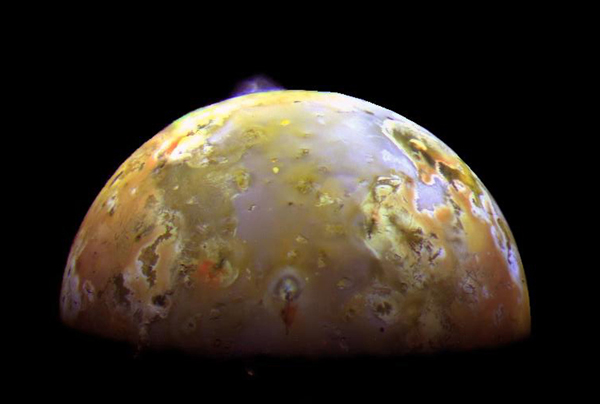
Two sulfurous eruptions are visible on Jupiter's volcanic moon Io.
Io Volcano Plume
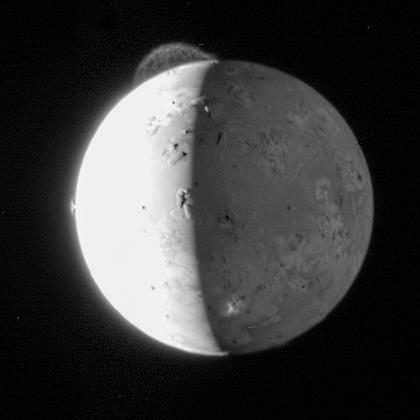
This still from five-frame photo sequence by NASA's New Horizons mission captures the giant plume from the Tvashtar volcano on Jupiter's moon Io. Only the upper part of the plume is visible from this vantage point. The plume's source is 130 km (80 miles) below the edge of Io's disk, on the far side of the moon. The New Horizons spacecraft captured this view during a flyby on March 1, 2007, while en route to Pluto.
Io and Europa Meet Again
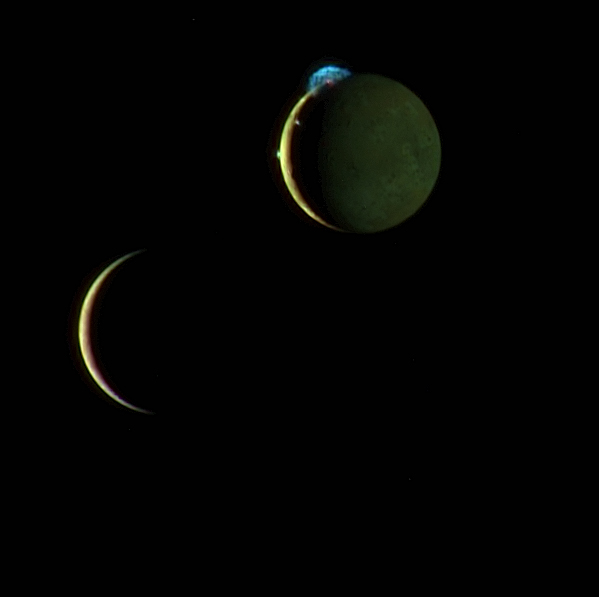
This beautiful image of the crescents of volcanic Io and more sedate Europa is a combination of two New Horizons images taken March 2, 2007. Io steals the show with its beautiful display of volcanic activity.
Jupiter's Amazing Moon Io
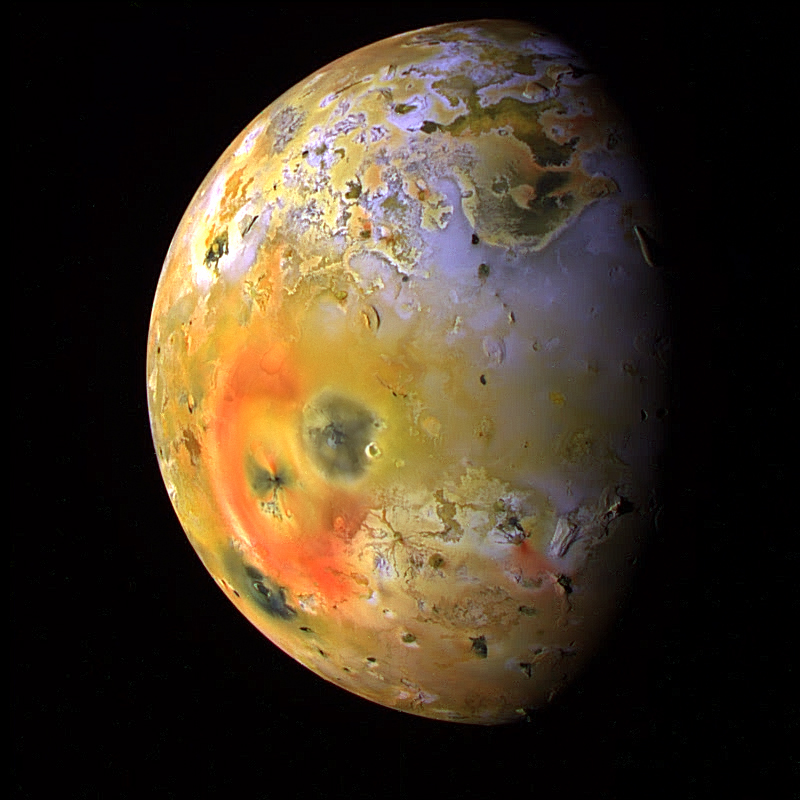
This global view of Jupiter's moon, Io, was obtained during the tenth orbit of Jupiter by NASA's Galileo spacecraft on 19 September 1997 at a range of more than 500,000 km (310,000 miles). Io (which is slightly larger than Earth's moon) is the most volcanically active body in the solar system. Colors are enhanced.
Galileo Views of Io
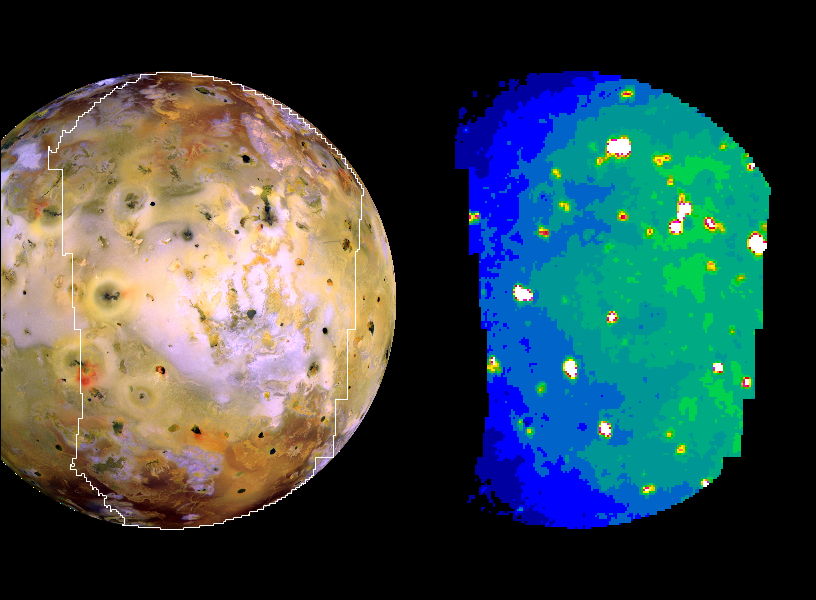
Galileo spacecraft observations: a three-color global scale view of Io obtained on 3 July 1999 (Orbit 21) with a resolution of 1.3 km per pixel is shown on the left. The corresponding infrared image on the right was taken at 4.7 μm on October 16 2001 in daytime and has a spatial resolution of 30 km/pixel obtained . The near infrared picture shows the active volcanoes glowing thermal radiation.
Bright & Young Eruptions on Io
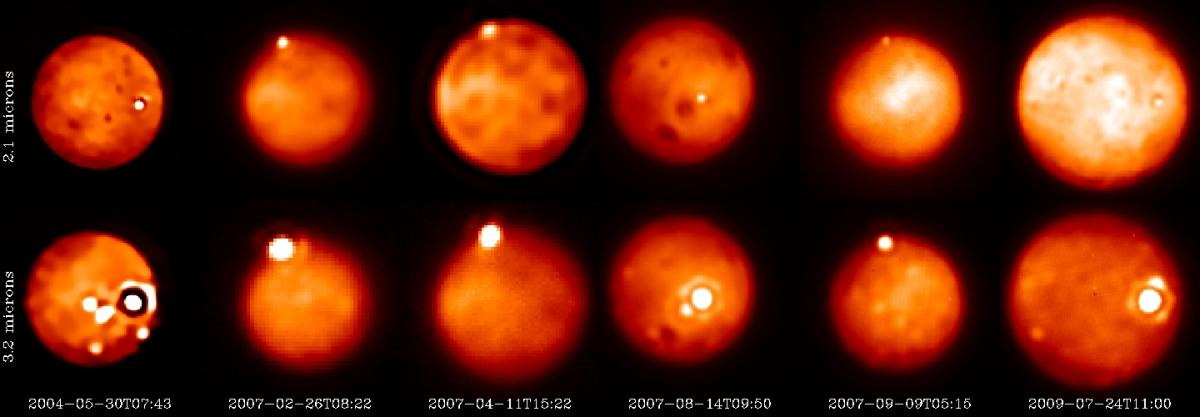
Observations of several bright & young eruptions on Jupiter's moon Io detected at short wavelength (~ 2.1 mm) on the top and longer wavelength (~ 3.2 mm) on the bottom since 2004 using the W.M. Keck 10m telescope (May 2004, Aug 2007, Sep 2007, July 2009), the Gemini North 8m Telescope (Aug 2007) and the ESO VLT-Yepun 8m telescope (Feb 2007) and their adaptive optics systems.
Quiescent Activity of Io 2010 & 2011
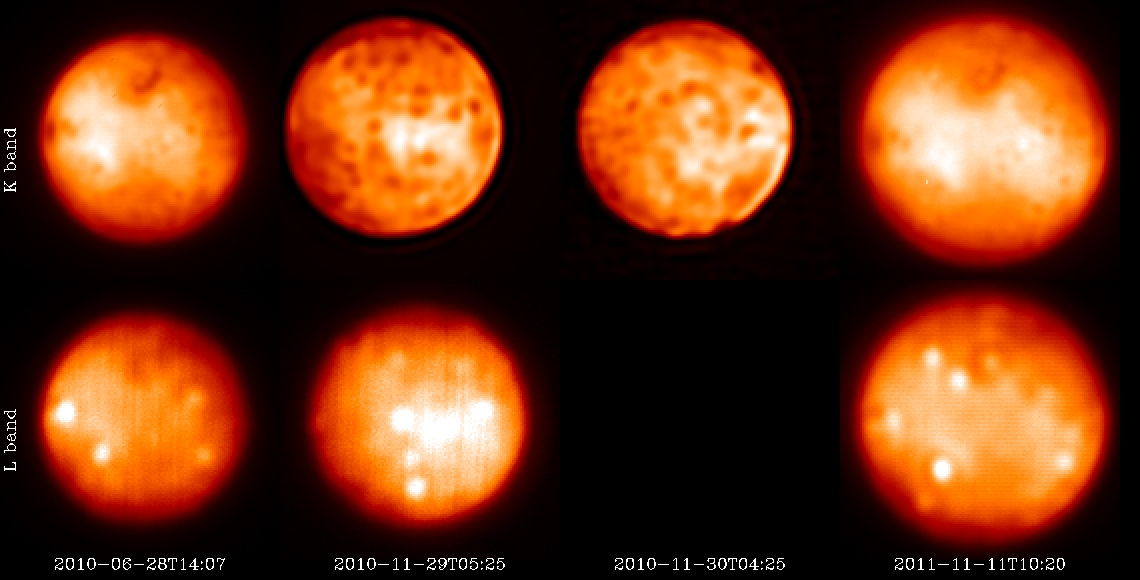
Quiescent activity of Io observed in 2010 & 2011 showing the several quasi-permanent eruptions in Lp band (at ~3μm) [bottom] and the absence of bright outbursts or young eruptions in K band (at ~2 μm) [top].
Get the Space.com Newsletter
Breaking space news, the latest updates on rocket launches, skywatching events and more!
Simulation of Observations of Io
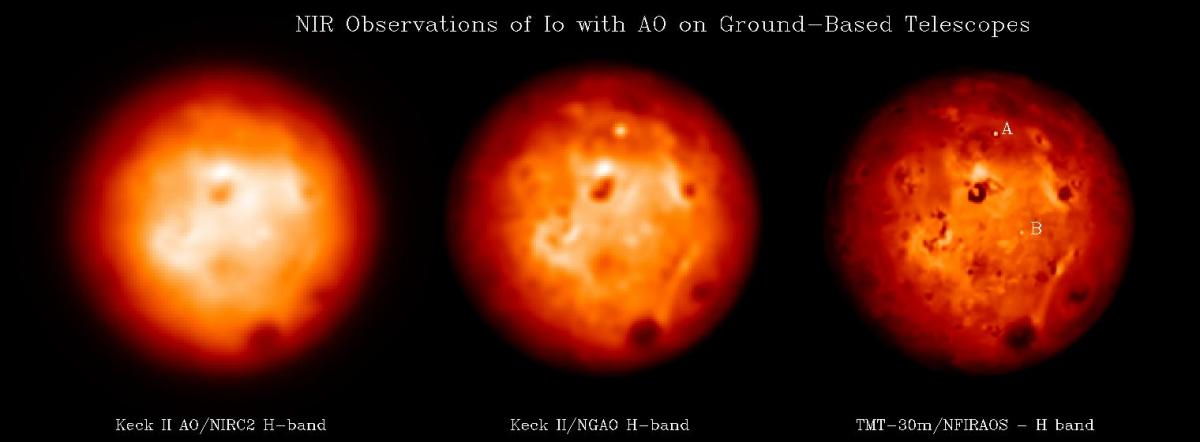
Simulation of observations of Io using the W.M. Keck telescope and its current AO system, a next generation AO system mounted on the W.M. Telescope (KNGAO), and the Thirty Meter Telescope (TMT) equipped with its AO system named (NFIRAOS).
First Global Map of Io, Jupiter's Volcano Moon
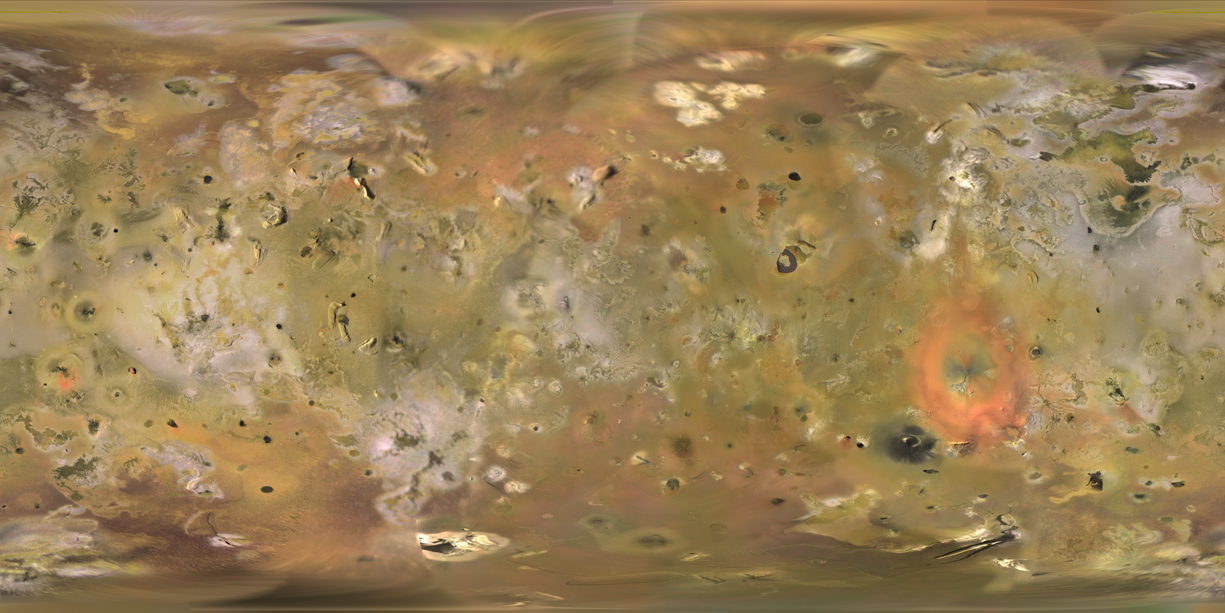
This first-ever complete map of Jupiter's volcanic moon Io released on March 19, 2012, was created using data and images from NASA's Galileo spacecraft, (which studied Jupiter and its moons between 1995 and 2003) and the Voyager mission in 1979. Color views from Galileo were superimposed on higher-resolution monochrome images. [Full story.]
Mystery of Io's Atmosphere Solved
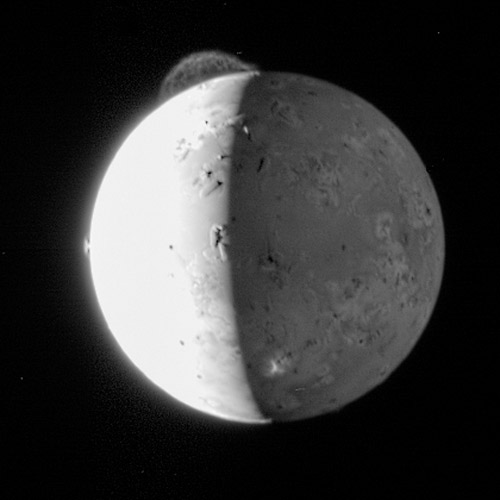
A composite image of Jupiter's moon Io. Volcanic plumes of gas spew sulfur dioxide hundreds of miles into space, as seen by the New Horizons spacecraft. Such activity accounts for a small chunk of the moon's immediate atmosphere, but eventually freezes and builds up a store of the material.
Jupiter's Moon Io, Taken by NASA's Galileo Spacecraft
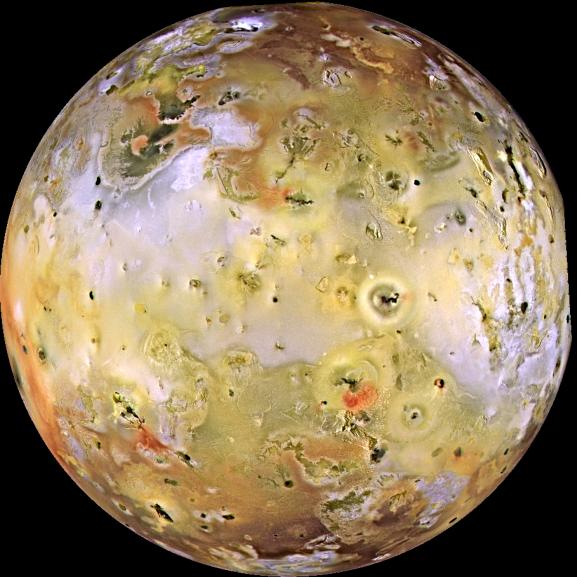
Io, the most volcanic body in the solar system, is seen in this composite image obtained by NASA's Galileo spacecraft in 1996. The smallest features that can be discerned are 2.5 kilometers in size.
Join our Space Forums to keep talking space on the latest missions, night sky and more! And if you have a news tip, correction or comment, let us know at: community@space.com.

Space.com is the premier source of space exploration, innovation and astronomy news, chronicling (and celebrating) humanity's ongoing expansion across the final frontier. Originally founded in 1999, Space.com is, and always has been, the passion of writers and editors who are space fans and also trained journalists. Our current news team consists of Editor-in-Chief Tariq Malik; Editor Hanneke Weitering, Senior Space Writer Mike Wall; Senior Writer Meghan Bartels; Senior Writer Chelsea Gohd, Senior Writer Tereza Pultarova and Staff Writer Alexander Cox, focusing on e-commerce. Senior Producer Steve Spaleta oversees our space videos, with Diana Whitcroft as our Social Media Editor.









